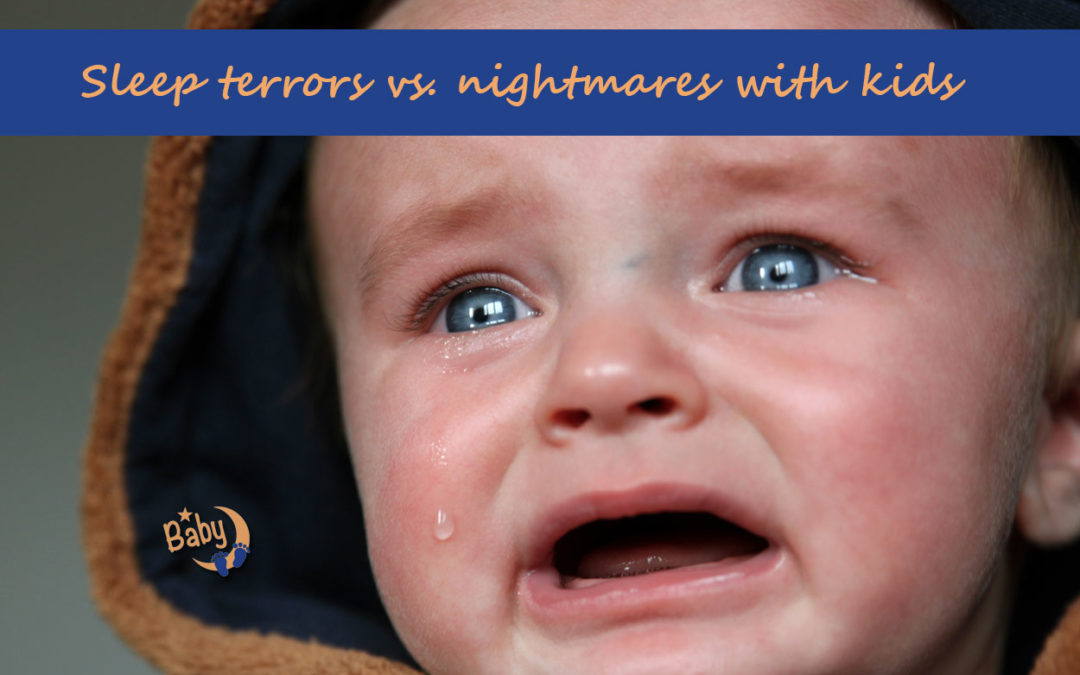The main differences between sleep terrors and nightmares with kids
There are many parents who go through sleep terrors and nightmares with their own children. None of them is neither easy to experience nor to see, especially with your own kid.
It is important to mention from the very beginning that confusional arousals like sleep terrors have absolutely no connection with bad dreams or seizures.
What are these partial wakings and when they occur?
Sleep terrors are relatively common behaviour for young children happening during the first part of the night, because of an incomplete waking (during deep sleep phase). These partial wake-ups occur when a child is strongly driven to stay asleep and to wake up at the same time (there is not a proper balance between the drive to sleep and to wake, depending on the sleep phase).
On the other hand, nightmares usually occur during the second part of the night (during REM – dream sleep phase) and are more connected with major events happening during the previous days.
Sleep terrors can manifest as partial waking in the form of long periods of crying during which kids cannot be comforted or calmed whereas nightmares take the form of a sudden wake up during which children can be comforted to calm down.
Form of manifestation
During a sleep terror episode the kid can get very active, can move, get out of bed or room, can become aggressive and even destroy things around him, hence the high possibility of danger or injury while being in a non-awake state.
On the other hand, during nightmares kids remain in bed safely and cannot move due to the near-paralysis characteristic of REM sleep.
Age of child
Sleep terrors are considered the most dramatic of all sleep disorders (or the most frightening for the family members who witness them) and can occur more in school years, adolescence and puberty (although can sometimes occur with babies and toddlers), while bad dreams are more common in toddlers between 2 and 5 years of age.
Usually kids do not recall any memory after a sleep terror and they feel okay the next day while kids could retell the detailed story after a nightmare, but feel pretty tired the next day.
What to do?
Although quite scary and frustrating, the only things parents can do for a kid experiencing sleep terror is to stay aside, make the room as safe as possible, wait for this phase to pass & keep calm and control their worries.
In case of a nightmare, parents can help the kid by hugging and touching him, comforting him with reassuring words, keep the door open or set up a dim light in the hallway at night and even sleep in the same room with him for a couple of nights.
In both cases it helps to ensure adequate sleep of the child, regular schedule, no night-time duties, a pleasant & calm bedtime routine, an age appropriate bedtime, safe sleeping room for the child, parent-child bonding time during the day, open talks and hugs, relaxation exercises / meditation and even counselling for emotional issues.
Should you need more support to ensure the best sleep conditions for your kid, I am happy to connect.
